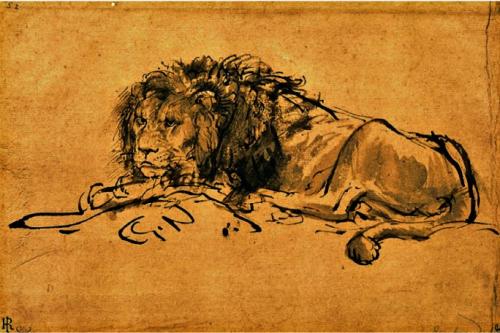- Cape Lion
Taxobox
name = Cape Lion
status =

image_width = 250px
regnum =Animal ia
phylum = Chordata
classis =Mammal ia
ordo =Carnivora
familia =Felidae
genus = "Panthera "
species = "P. leo"
subspecies = "P. l. melanochaitus"
trinomial = "Panthera leo melanochaitus"
trinomial_authority = Ch. H. Smith, 1842The Cape Lion, "Panthera leo melanochaitus", is a
subspecies oflion and is nowextinct in the wild .Cape "black-maned" Lions ranged along the Cape of
Africa on the southern tip of the continent. The Cape Lion was not the only subspecies living inSouth Africa , and its exact range is unclear. Its stronghold wasCape Province , in the area aroundCape Town . The last Cape Lion seen in the province was killed in1858 .As with the
Barbary lion , several people and institutions claim to have Cape lions. In2000 , possible specimens were found in captivity inRussia and brought toSouth Africa for breeding. [ [http://news.bbc.co.uk/1/hi/world/monitoring/media_reports/1007452.stm BBC News. 5 November, 2000: 'Extinct' lions (Cape lion) surface in Siberia. Downloaded on 2 July 2006.] ] There is much confusion between Cape lions and other dark-coloured long-maned captive lions. Lions in captivity today have been bred and cross-bred from lions captured in Africa long ago, with examples from all of these 'subspecies'. Mixed together, hybridized, most of today's captive lions have a 'soup' of genes from many different lions. [Maas, P.H.J. 2006. Cape lion - Panthera leo melanochaitus. The Extinction Website. Downloaded on 2 July 2006.] Early authors justified "distinct" subspecific status of the Cape lion believed that that the seemingly fixed external morphology of the Cape lions (male’s huge mane extending behind shoulders and covering belly, and the distinctive black tips to the lion's ears). However, nowadays it is known that various extrinsic factors, including the ambient temperature, influence the colour and size of a lion’s mane. [West P.M., Packer C. (2002) Sexual selection, temperature, and the lion’s mane. Science, 297, 1339–1343.] Results ofmitochondrial DNA research published in2006 do not support the "distinctness" of the Cape lion. It now seems probable that the Cape lion was only the southernmost population of the extant southern African lion. [Barnett, R., N. Yamaguchi, I. Barnes & A. Cooper. 2006. Lost populations and preserving genetic diversity in the lion Panthera leo: Implications for its ex situ conservation. Conservation Genetics. [http://abc.zoo.ox.ac.uk/Papers/consgen06_lion.pdf Online pdf] ]References
External links
* [http://www.petermaas.nl/extinct/speciesinfo/capelion.htm The Extinction Website - Cape Lion - Panthera leo melanochaitus]
Wikimedia Foundation. 2010.
